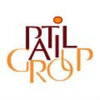Filter interviews by
Trident Auto Components Lead HR and Administrator Interview Questions and Answers
Trident Auto Components Lead HR and Administrator Interview Experiences
1 interview found
I applied via Naukri.com and was interviewed before Aug 2022. There were 2 interview rounds.

(7 Questions)
- Q1. Tell me about your self
- Q2. Why you want join our company
- Q3. Tell me your strengths and weaknesses
- Q4. What is your aim
- Q5. Where will be reach you next 5 yrs.
- Ans.
In the next 5 years, I aim to further develop my skills in HR and administration, take on more leadership responsibilities, and contribute to the growth and success of the organization.
Continue to enhance my knowledge and expertise in HR practices and regulations
Take on leadership roles within the HR department and lead projects to improve employee engagement and retention
Work towards obtaining HR certifications or adv...
- Q6. What is compliance and payroll
- Ans.
Compliance and payroll involve ensuring adherence to laws and regulations and managing employee compensation, respectively.
Compliance refers to following laws and regulations related to employment, taxes, and benefits
Payroll involves calculating and distributing employee salaries, taxes, and benefits
Compliance ensures that payroll processes are in line with legal requirements
Non-compliance can result in penalties and l...
- Q7. Why you want switch your current job
Interview Preparation Tips
Top trending discussions






Interview questions from similar companies

I applied via Instahyre and was interviewed before Oct 2021. There were 2 interview rounds.

(2 Questions)
- Q1. Job profile, family background, Liaoning, compliance etc
- Q2. Situation for tackle
Interview Preparation Tips

I appeared for an interview in Nov 2020.
Interview Questionnaire
1 Question
- Q1. Do you have experience in Microsoft Office?
Interview Preparation Tips

Technical Recruiter Interview Questions & Answers
Primus Global Technologiesposted on 5 Feb 2024
I applied via Naukri.com and was interviewed before Feb 2023. There were 2 interview rounds.
(1 Question)
- Q1. What is end to end recuritment
- Ans.
End-to-end recruitment is the complete process of hiring a candidate, starting from identifying the hiring need to onboarding the selected candidate.
It involves understanding the hiring requirements and creating a job description.
Sourcing candidates through various channels like job portals, social media, and referrals.
Screening and shortlisting candidates based on their qualifications and experience.
Conducting intervi...
(1 Question)
- Q1. Why you prefer to join primus

Senior Manager Interview Questions & Answers
Primus Global Technologiesposted on 19 Jun 2024
Asked scenario based questions
(1 Question)
- Q1. Scenario based questions
Interview Preparation Tips

(5 Questions)
- Q1. Salary why not time being paid ?
- Q2. Without any evidence how blaming staff ??
- Ans.
Blaming staff without evidence is unprofessional and can damage morale and trust within the team.
Avoid jumping to conclusions without concrete evidence
Encourage open communication and transparency
Focus on problem-solving rather than assigning blame
Provide constructive feedback and support to help staff improve
Lead by example and take responsibility for mistakes
- Q3. Company always carried out theft staff ?
- Q4. No one professional staff in office and overall company ??
- Q5. Why directors board unseen to thefts??
- Ans.
Directors may not always be aware of thefts due to lack of oversight, trust in employees, or focus on other priorities.
Directors may not be directly involved in day-to-day operations where thefts occur
There may be a lack of proper oversight or monitoring mechanisms in place
Directors may trust their employees and not suspect them of theft
Directors may be focused on other strategic priorities and not pay attention to pot
Interview Preparation Tips
Hr team non capable and non educated people

I applied via Campus Placement and was interviewed in Mar 2024. There were 5 interview rounds.
I am writing automation and clicking on aptitude test.
I am writing automation and clicking on assignment test.
(2 Questions)
- Q1. Hey guys? How is it going. I gotta work for it. This is an automation task.
- Ans. Hey guys? How is it going. I gotta work for it. This is an automation task. Answer
- Q2. Hey guys? How is it going. I gotta work for it. This is an automation task. Yes
This is an automation test. I got this task from my senior. I'm doing good.
This is an automation test. I got this task from my senior. I'm doing good.
Interview Preparation Tips
- Testing
- Software Testing
- DSA

I applied via Campus Placement and was interviewed in Mar 2024. There were 5 interview rounds.
I am writing automation and clicking on aptitude test.
I am writing automation and clicking on assignment test.
(2 Questions)
- Q1. Hey guys? How is it going. I gotta work for it. This is an automation task.
- Ans. Hey guys? How is it going. I gotta work for it. This is an automation task. Answer
- Q2. Hey guys? How is it going. I gotta work for it. This is an automation task. Yes
This is an automation test. I got this task from my senior. I'm doing good.
This is an automation test. I got this task from my senior. I'm doing good.
Interview Preparation Tips
- Testing
- Software Testing
- DSA

I applied via Campus Placement and was interviewed in Mar 2024. There were 5 interview rounds.
I am writing automation and clicking on aptitude test.
I am writing automation and clicking on assignment test.
(2 Questions)
- Q1. Hey guys? How is it going. I gotta work for it. This is an automation task.
- Ans. Hey guys? How is it going. I gotta work for it. This is an automation task. Answer
- Q2. Hey guys? How is it going. I gotta work for it. This is an automation task. Yes
This is an automation test. I got this task from my senior. I'm doing good.
This is an automation test. I got this task from my senior. I'm doing good.
Interview Preparation Tips
- Testing
- Software Testing
- DSA

I applied via Campus Placement and was interviewed in Mar 2024. There were 5 interview rounds.
I am writing automation and clicking on aptitude test.
I am writing automation and clicking on assignment test.
(2 Questions)
- Q1. Hey guys? How is it going. I gotta work for it. This is an automation task.
- Ans. Hey guys? How is it going. I gotta work for it. This is an automation task. Answer
- Q2. Hey guys? How is it going. I gotta work for it. This is an automation task. Yes
This is an automation test. I got this task from my senior. I'm doing good.
This is an automation test. I got this task from my senior. I'm doing good.
Interview Preparation Tips
- Testing
- Software Testing
- DSA
Trident Auto Components Interview FAQs
Tell us how to improve this page.
Interview Questions for Popular Designations
- System Administrator Interview Questions
- Linux Administrator Interview Questions
- Network Administrator Interview Questions
- Oracle Database Administrator Interview Questions
- Office Administrator Interview Questions
- IT Administrator Interview Questions
- Linux System Administrator Interview Questions
- Senior System Administrator Interview Questions
- Show more
Trident Auto Components Lead HR and Administrator Interview Process
based on 1 interview
Interview experience
Interview Questions from Similar Companies
Trident Auto Components Lead HR and Administrator Reviews and Ratings
based on 1 review
Rating in categories
|
Production Engineer
20
salaries
| ₹1.8 L/yr - ₹3.4 L/yr |
|
Senior Engineer
16
salaries
| ₹2.5 L/yr - ₹4.4 L/yr |
|
Assistant Manager
11
salaries
| ₹3 L/yr - ₹6 L/yr |
|
Senior Production Engineer
7
salaries
| ₹2.4 L/yr - ₹5.6 L/yr |
|
Design Engineer
6
salaries
| ₹2 L/yr - ₹2.6 L/yr |

Primus Global Technologies

Kiswok Industries

Elentec Power India (EPI) Pvt. Ltd.

Patil Group
- Home >
- Interviews >
- Trident Auto Components Interview Questions >
- Trident Auto Components Lead HR and Administrator Interview Questions









